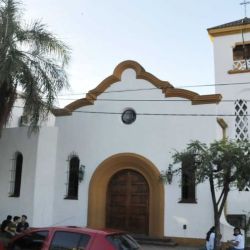Father Pablo Ferreiro is a direct witness to the brutality of poverty. The city where the priest’s parish is based, Resistencia, the provincial capital of Chaco, has the highest poverty rate in the country: 76.2 percent, according to the recent survey by Argentina’s INDEC national statistics bureau.
“Seeing poverty data is one thing, but seeing the faces of destitution and poverty is heart-breaking,” said the religious leader, who has overseen the Jesuitical parish of San Javier since 2016.
“Over the last eight years we have seen degradation and an increase in poverty,” said Father Ferreiro, adding: “The most excruciating face of poverty is that of the children we welcome into our homes.”
According to INDEC data, poverty affected 52.9 percent of the population in the first semester of the year, affecting 24.9 million people across Argentina.
However, in the north of the country, in the urban areas of Greater Chaco – such as Fontana, Villela, Barranqueras and Greater Resistencia – poverty has a higher ceiling. In some areas, three out of four people cannot cover their basic needs.
Father Ferreiro’s parrish, three times a week, provides some food to those who need it most.
“We see the faces of usual poverty, and new poverty. Most of them are youths with various problems and addictions. Over the last eight years, we have seen degradation”of the situation, said Ferreiro in a recent radio interview
“We have noticed an increase, because the amount of bread we buy for the homeless has trebled,” he explained.
Ferreiro warns about increasing poverty among the young in Resistencia. Many children and teenagers suffer abandonment. With some eventually residing at the Hogar Santa Teresita, a care home that is dependent on the parish.
“Over the last four months, we have welcomed six girls aged between 4 and 11 with various problems,” explained the priest.
“They have personally suffered material and moral poverty. We’re getting girls who have been abandoned, beaten, abused. It’s very painful to encounter those situations,” he added.
Ferreiro said that some “girls arrive with the clothes on their back”, wearing “leggings, a T-shirt and [with] no bag”
“One who came in July had been to school three times in June,” he explained. She took her younger siblings there. It’s poverty that lacks love. When you hear this from the girls themselves, your heart breaks.”
The priest cannot help but face the harshness of reality. “One has to stay strong and give confidence [to the girls] that they’re going to be alright at the [care] home. Regardless of whether they are later put up for adoption, while they’re at the home, we give them everything they didn’t have with their parents,” said Ferreiro.
According to INDEC’s data, poverty has a higher incidence among children than among adults. The bureau found that 66.1 percent of children aged under 14 live in households with an income lower than that required to meet the total basic food basket.”
Ferreira highlighted the importance of the work of homes such as Santa Rita. “We have plenty of faith that they can recover,” he said.
– TIMES/PERFIL





















Comments